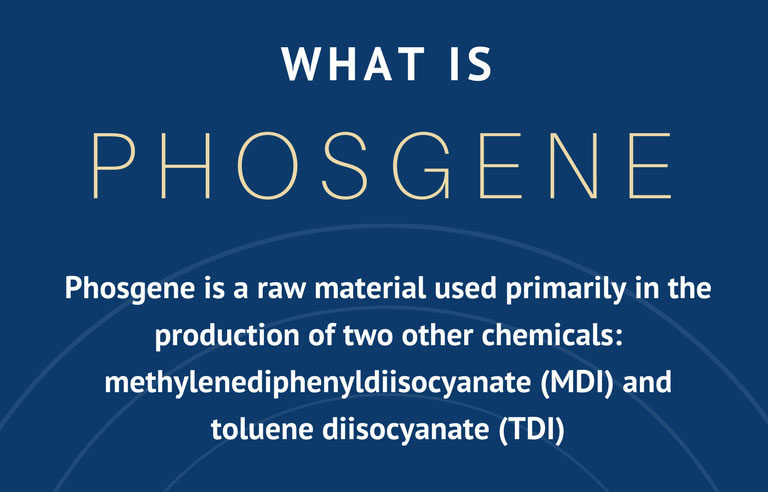American Chemistry Council updates PPE, hygiene guidelines for phosgene

Photo: American Chemistry Council
Washington – The American Chemistry Council recently released updated guidelines on preventive health measures and the use of personal protective equipment for workers exposed to phosgene, a chemical used in manufacturing that is a poisonous gas at room temperature.
To detect the presence of phosgene, ACC recommends the use of monitoring badges, which change colors when exposed to the chemical. ACC added that remote optical sensing systems may be effective in identifying phosgene “down a long path, rather than detecting its presence at a single point.”
Badges should be placed in “the breathing zone” of a worker, and any badges potentially hindered by water or ultraviolet light should be placed underneath the front brim of a hard hat. Clips also may be used to keep badges attached to a collar, but wearing them underneath protective equipment or on the back of a hard hat could negate their effectiveness.
ACC suggests that organizations develop written instructions for the use of badges and establish a medical reporting system. The organization also recommends handling the gas in “completely closed processing systems” to decrease possible worker exposure.
If phosgene is released, ACC advises quickly evacuating the affected area and upon re-entry, using proper respiratory protection – “pressure demand full-face supplied air respirators in combination with an auxiliary self-contained breathing apparatus.”
ACC also noted additional PPE to be used:
- Chemical-resistant suits to protect against splashing liquids
- Rubber or leather safety shoes with built-in steel toes
- Hand protection to guard against cryogenic burns
- Safety glasses with side shields
For decontamination purposes, ACC recommends that emergency response personnel seal any contaminated clothing/phosgene badges in airtight containers. Decontamination should be verified before respiratory protection is removed. Keep in mind, ACC states, that phosgene can remain trapped in low dips in pipes/equipment, process fluids or solids.
Post a comment to this article
Safety+Health welcomes comments that promote respectful dialogue. Please stay on topic. Comments that contain personal attacks, profanity or abusive language – or those aggressively promoting products or services – will be removed. We reserve the right to determine which comments violate our comment policy. (Anonymous comments are welcome; merely skip the “name” field in the comment box. An email address is required but will not be included with your comment.)

